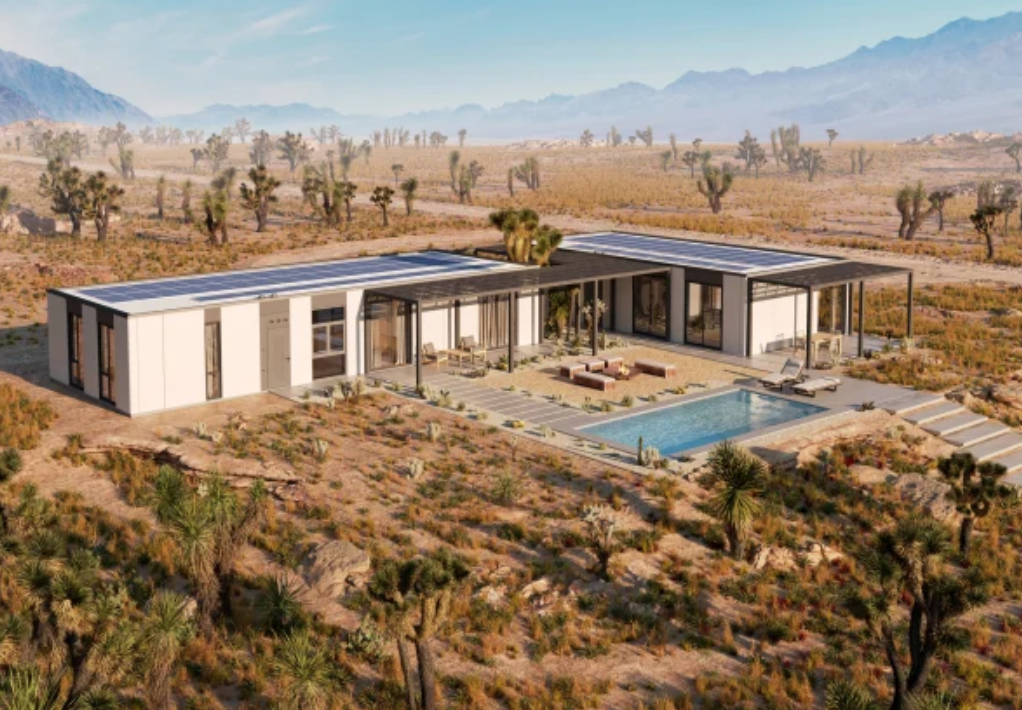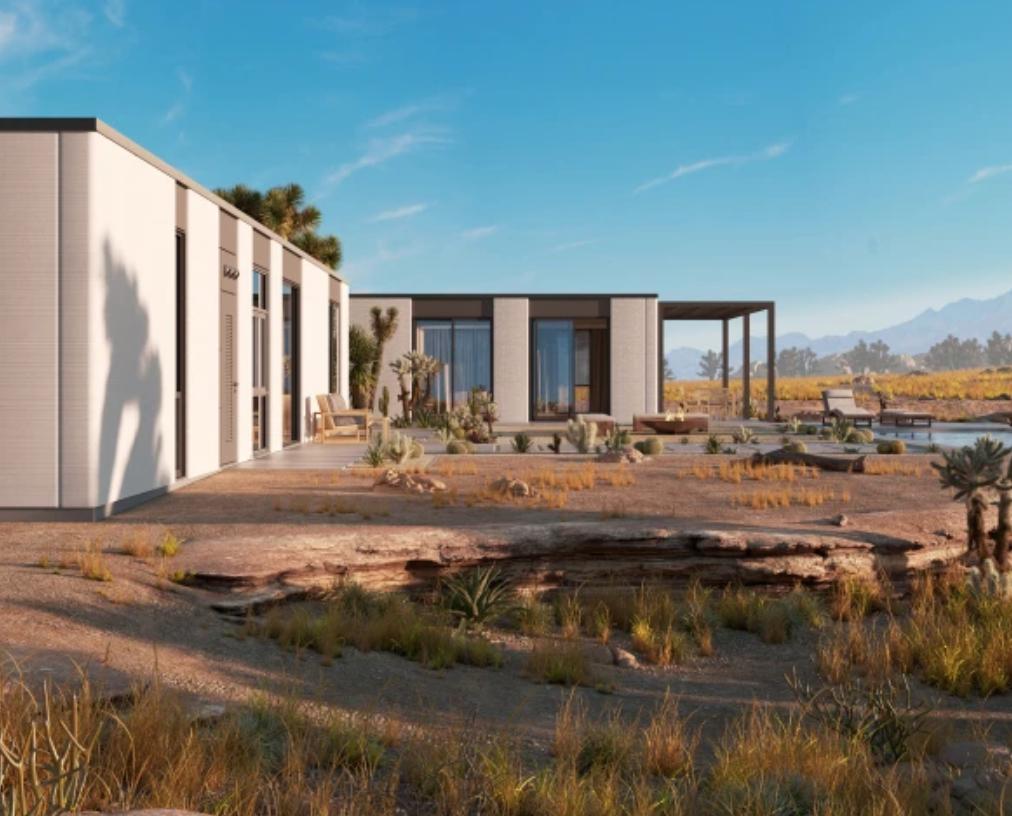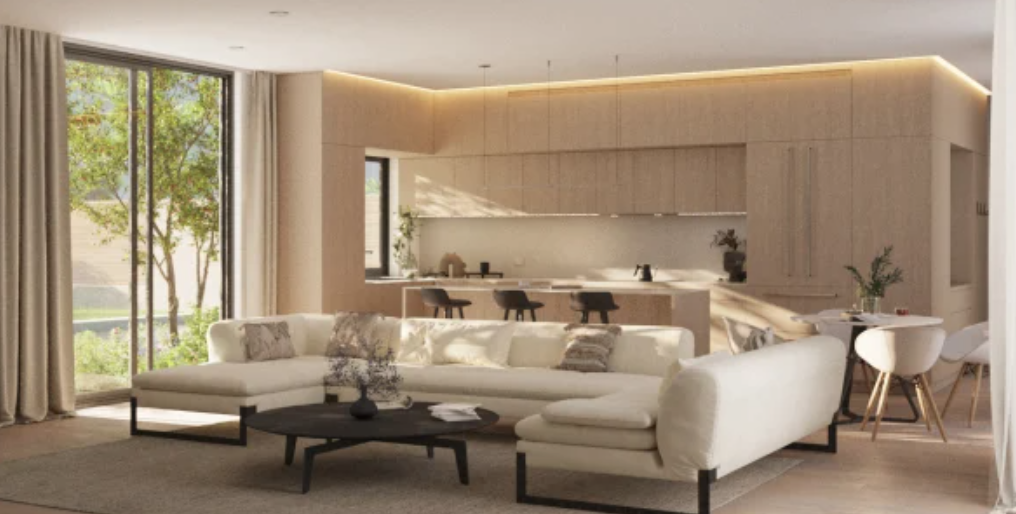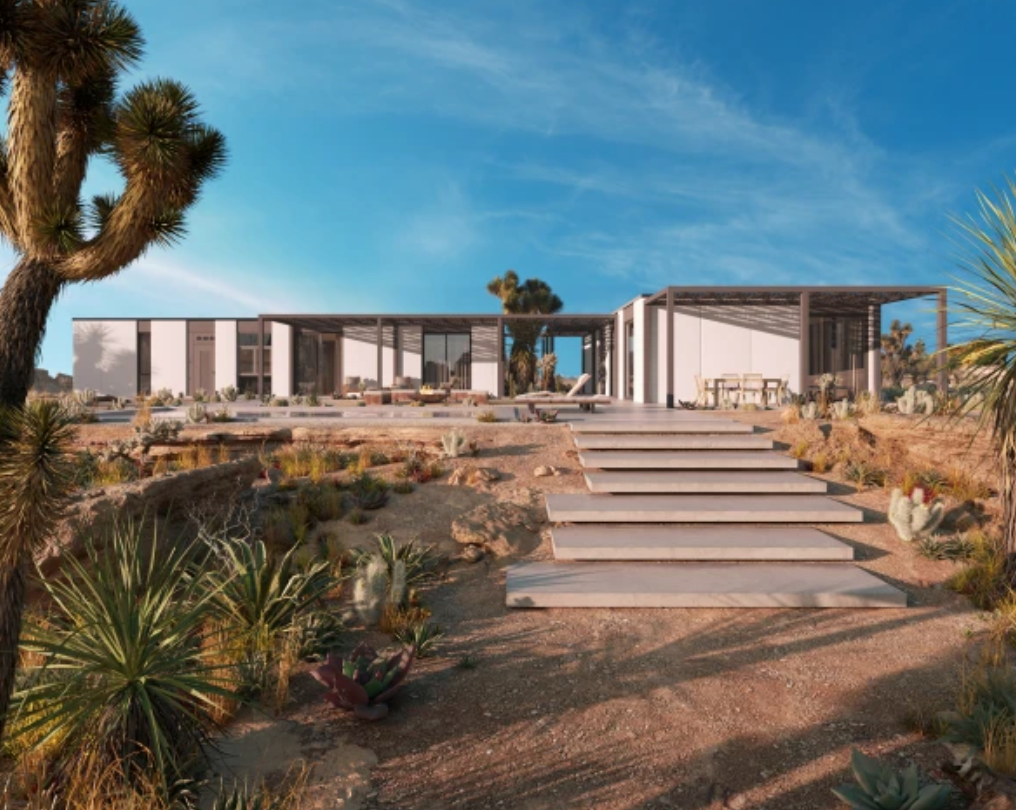Main Content
Blog
Blog Details
Sustainable 3D-Printed Houses Are The Suburbs of The Future
Perched in the rocky, rolling, cactus-filled foothills of Desert Hot Springs, California, midway between Palm Springs and Joshua Tree, is the sleek prototype of a 3D printed home known as the “Mighty Quatro.” Designed by Culver City architects EYRC and built by automated home manufacturer Mighty Buildings, the flat, rectangular abode, faced with textured 3D printed panels and tall, rectangular windows, is the first of almost two dozen that will soon help fill a gated community here. Oakland-based Mighty Buildings asserts that its homes are twice as fast to build, 99 percent less waste-generating, far more precisely-crafted, and (thanks to its stone-like composite) four times stronger than conventional residences. When it launched in 2017, it planned to create one-off lodgings for discerning homeowners. But their model has since shifted dramatically in favor of projects like this one, in which they partner with homebuilders to create larger developments.

Construction on Mighty Homes’ Desert Hot Springs community, developed by Beverly Hills-based Palari, is already underway, and when complete will feature 20 Mighty Quatro units and 50 traditionally constructed units. Each Mighty Quatro measures 1,176 square feet with two bedrooms, two bathrooms, and a separate ADU. Many will have their own pool. The homes, fabricated in a factory in Monterrey, Mexico and pieced together (via a steel inlay system) on site, are designed to be Net Zero Energy (not an easy task in the desert), thanks to roofs made of solar panels, heat pump systems, which can reduce heating-related energy use by about half, and well-insulated infill panels made from 60 percent recycled resin. Each model has been pre-approved as part of the state’s Department of Housing and Community Development Factory Built Housing (FBH) program.

Their designs recall those of Art and Architecture Magazine’s Case Study House program, launched in 1945 to create inexpensive and efficient model homes by some of Southern California’s best architects. In fact the prototype is the spitting image of Craig Ellwood’s Case Study House 18, built in 1957. “We absolutely looked at the Case Study Program as a model,” says EYRC partner Mathew Chaney. “It’s a simple kit of parts that is repetitive and flexible.” He continues: “Right now our typical custom homes go for $800 a square foot if we’re lucky, while these go for half that. The idea is, how do you bring that sort of quality thinking about design and make it affordable and accessible to a broader public?” Mighty Buildings is preparing to build more communities in California and beyond, with home sizes including the two-bedroom Quatro, three-bedroom Super Quatro, and 4 bedroom Mighty House Two Story.

Meanwhile, 3D home manufacturers around the country, and the world, are discovering the efficiency advantages of building communities instead of one-offs. It’s too soon to tell, but it could transform the homebuilding industry and architecture at the same time. This evolution could finally give award-winning architects like EYRC and BIG—long frozen out of the formula-driven multi-billion-dollar mass homebuilding industry— a feasible way in; particularly if builders are looking to differentiate themselves through innovative tract layouts and home compositions. But while the few 3D printed tracts now going up show some promise, ratcheting up the greenery, sustainability, and design quality, their repetitive planning and architecture don’t stray far from the norm.

This could herald a futuristic version of cookie cutter suburbia, which like its predecessors—such as Levittown, a series of mass produced, assembly-line-style developments that sprang up in the housing-starved years after World War II— is based primarily on the idea of efficiency and affordability. In Desert Hot Springs, Mighty Buildings’ homes change orientation depending on their relationship to sun, views, and other environmental factors, and are softened with varied fencing and landscaping, notes Chaney, “so it doesn’t look like a monotonous trailer park.” The ability to create a more diverse kit of parts will only grow, says Russ, as new iterations get their own approvals. But the homes are still lined up one after the next in a gated community. And as the model progresses and developers take on larger plots, control over design could become harder and harder to maintain. “We’re responsible for the house, but not necessarily where it goes,” notes EYRC’s Chaney. “It’s like if we designed a Toyota and they wanted to drive it to Joshua Tree or Tallahassee. They soon enough will be out in the wild.”
Text by Sam Lubell | Photo by | Read More Here



Login With
Or Sign Up With Disqus